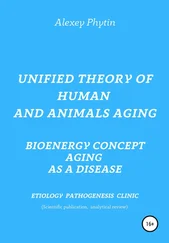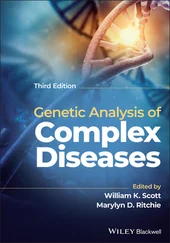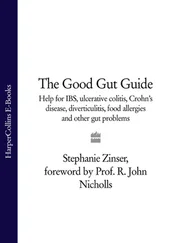1 Cover
2 Title Page Infectious Disease Management in Animal Shelters Second Edition Edited by Lila Miller, BS, DVM Vice President, Shelter Medicine (retired) American Society for the Prevention of Cruelty to Animals (ASPCA) New York, NY, USA Stephanie Janeczko, DVM, MS, DABVP (Shelter Medicine and Canine/Feline Practice), CAWA Vice President, Shelter Medicine Services Director, Julie Morris Shelter Medicine Residency Program American Society for the Prevention of Cruelty to Animals New York, NY, USA Kate F. Hurley, DVM, MPVM, DABVP (Shelter Medicine Practice) Director, UC Davis Koret Shelter Medicine Program Assistant Clinical Professor Shelter Medicine and Small Animal Population Health School of Veterinary Medicine University of California Davis, CA, USA
3 Copyright Page
4 Dedication Page
5 Contributors
6 Preface
7 Acknowledgments
8 1 Introduction to Infectious Disease Management in Animal Shelters 1.1 Why This Book? 1.2 The Growth of Shelter Medicine 1.3 Capacity for Care: Blending Shelter Medicine and Management 1.4 Conclusion References
9 2 Wellness 2.1 Introduction: Wellness Defined 2.2 The Critical Importance of Wellness Protocols for Shelters 2.3 The Problem‐Oriented Approach to Shelter Medicine 2.4 Policy and Protocol Development 2.5 Wellness: Physical Health 2.6 Wellness: BehavioralHealth 2.7 Proper Housing 2.8 Enrichment 2.9 Environmental Wellness 2.10 Conclusion References
10 3 Data Surveillance 3.1 Introduction 3.2 Disease Surveillance 3.3 Length of Stay (LOS) in Shelters 3.4 Capacity for Care 3.5 Other Disease‐Related Metrics 3.6 Software Needs 3.7 Shelters Without Shelter‐Specific Software 3.8 The Future 3.9 Summary References
11 4 Diagnostic Testing 4.1 Introduction 4.2 Obtaining Diagnostic Samples 4.3 Types of Diagnostic Tests 4.4 Indications for Diagnostic Testing 4.5 Accuracy and Testing Strategy 4.6 Standard Operating Procedures 4.7 Conclusion References
12 5 Necropsy Techniques 5.1 Introduction 5.2 Why Sample Tissues at Necropsy? 5.3 The Necropsy 5.4 Steps in Performing a Necropsy 5.5 The Diagnostic Shelter Necropsy 5.6 Other Shelter Necropsies 5.7 Conclusion References
13 6 Outbreak Management 6.1 Introduction 6.2 Infectious Disease Outbreaks 6.3 Infectious Disease and Outbreak Response Plan 6.4 Outbreak Prevention 6.5 Outbreak Detection 6.6 Outbreak Investigation 6.7 Outbreak Epidemiology 6.8 Control Measures 6.9 Decision‐Making 6.10 Working with the Media 6.11 Community Considerations 6.12 Conclusion 6.A Sample Disease Outbreak Tracking Form References
14 7 Pharmacology 7.1 Principles of Drug Decision Making and Therapeutics 7.2 Searching for and Applying Evidence for Efficacy: Is the Drug Likely to Improve Animal Outcomes? 7.3 Drug Options Should be Refined Based on Efficacy by Consideration of Constraints on those Options 7.4 Application of Decision Making to Antibiotics 7.5 The Shelter Pharmacy 7.6 Conclusion References
15 8 Sanitation 8.1 Introduction 8.2 Components of the Sanitation Process 8.3 Common Products used in Sanitation Procedures in Animal Shelters 8.4 Order of Cleaning and Disinfection 8.5 Where to Focus Sanitation Efforts 8.6 Sanitation of Animal Housing and Handling Areas 8.7 Sanitation of Animal‐Related Items 8.8 Sanitation for the Staff 8.9 Developing a Shelter Sanitation Plan 8.10 Conclusion References
16 9 Canine and Feline Vaccinations and Immunology 9.1 Introduction 9.2 Vaccinations and Immunity 9.3 Vaccine Characteristics: Efficacy, Onset of Action and Duration of Immunity 9.4 Vaccination Protocols for Shelters 9.5 Vaccine Handling, Administration, and Adverse Reactions 9.6 Core Vaccines for Shelter Dogs and Cats 9.7 Optional, Non‐core Vaccines for Cats and Dogs in a Shelter 9.8 Juvenile Animals 9.9 Use of Hyperimmune Serum for Disease Prevention 9.10 Risk Assessment and Evaluation of Serologic Immunity for Canine Distemper, Canine Parvovirus and Feline Panleukopenia 9.11 Vaccine Effects on Diagnostic Testing 9.12 Conclusion References
17 10 Canine Infectious Respiratory Disease (CIRD) 10.1 Introduction 10.2 Etiological Agents, Epidemiology, and Course of Disease 10.3 Prevalence 10.4 Diagnosis 10.5 Prevention and Control 10.6 Treatment 10.7 Implications for Foster Care and Adoption 10.8 Implications for Relocation Programs 10.9 Euthanasia Guidelines 10.10 Conclusion References
18 11 Canine Distemper Virus 11.1 Introduction 11.2 Agent and Epidemiology 11.3 Transmission 11.4 Pathogenesis 11.5 Risk Factors for Infection 11.6 Incubation Period, Clinical Signs and Disease Course 11.7 Diagnosis of Canine Distemper 11.8 Treatment 11.9 Prevention, Management, and Response to Disease in the Shelter 11.10 CDV Outbreak Management 11.11 Considerations for Adoption 11.12 Conclusion References
19 12 Canine Influenza 12.1 Introduction 12.2 Epidemiology of Canine Influenza Virus 12.3 Clinical Signs 12.4 Diagnosis 12.5 Treatment 12.6 Prevention and Management 12.7 Conclusion References
20 13 Feline Infectious Respiratory Disease 13.1 Introduction 13.2 Causative Agents, Pathogenesis and Clinical Signs 13.3 Transmission 13.4 Clinical Epidemiology 13.5 The Effect ofEnvironment and Shelter Type on Pathogen Prevalence 13.6 Risk Factors forClinical Respiratory Disease 13.7 Diagnostics 13.8 Treatment 13.9 Management and Prevention of URTD 13.10 Conclusion References
21 14 Canine Parvovirus and Other Canine Enteropathogens 14.1 Introduction 14.2 Canine Parvovirus‐2 14.3 Other Enteropathogens 14.4 Conclusion References
22 15 Feline Panleukopenia 15.1 Introduction 15.2 Epidemiology and Course of Disease 15.3 Clinical Signs 15.4 Morbidity/Mortality/Prognosis 15.5 Diagnosis 15.6 Treatment 15.7 Prevention and Control/Risk Assessment 15.8 Implications for Adoption and Foster Care 15.9 Conclusion References
23 16 Feline Coronavirus and Feline Infectious Peritonitis 16.1 Introduction 16.2 Etiology 16.3 Epidemiology 16.4 Pathogenesis 16.5 Transmission 16.6 Immune Response 16.7 Clinical Signs 16.8 Diagnosis 16.9 Treatment 16.10 Prevention and Control 16.11 Outbreak Management 16.12 Euthanasia Guidelines 16.13 Client Education/Implications for Adoption, Relocation and Foster Care 16.14 Conclusion References
24 17 Internal Parasites 17.1 Introduction 17.2 Parasite Transmission and Treatment Considerations in Animal Shelters 17.3 Parasites with Direct Transmission 17.4 Parasites with Indirect Transmission 17.5 Conclusion References
25 18 Heartworm Disease 18.1 Introduction 18.2 Lifecycle of Dirofilaria immitis 18.3 Transmission 18.4 Heartworm Disease in Dogs 18.5 Heartworm Disease in Cats 18.6 Heartworm Disease in Ferrets 18.7 Screening and Diagnostic Testing 18.8 Prevention 18.9 Heartworm Treatment 18.10 Conclusion References
26 19 External Parasites 19.1 Introduction 19.2 Ectoparasites with all Life Stages on the Host 19.3 Ectoparasites withEnvironmental and HostStages 19.4 Temporary Ectoparasites Associated with Hosts Only While Feeding 19.5 Conclusion 19.A Ectoparasites Potentially Affecting Shelter Animals References
27 20 Dermatophytosis 20.1 Introduction 20.2 Etiology 20.3 Pathogenesis 20.4 Disease Course 20.5 Transmission 20.6 Clinical Presentation and Differential Diagnoses 20.7 Diagnosis 20.8 Initial Risk Evaluation and Response 20.9 Treatment 20.9.1 Topical Treatment 20.10 Outbreak Management and Response 20.11 Considerations for Adoption 20.12 Conclusion References
28 21 Zoonosis 21.1 Introduction 21.2 General Guidelines for Zoonotic Disease Prevention 21.3 Zoonotic Diseases 21.4 Adoption Considerations 21.5 Consulting with the Department of Health 21.6 Conclusion 21.A Sample Animal Bite Investigation Form References
29 22 Rabies 22.1 Overview of Rabies 22.2 Rabies Pathophysiology 22.3 Rabies Prevention and Control 22.4 Additional Considerations for Shelters and Shelter Animals 22.5 Conclusion and Sources of Additional Information References
Читать дальше












